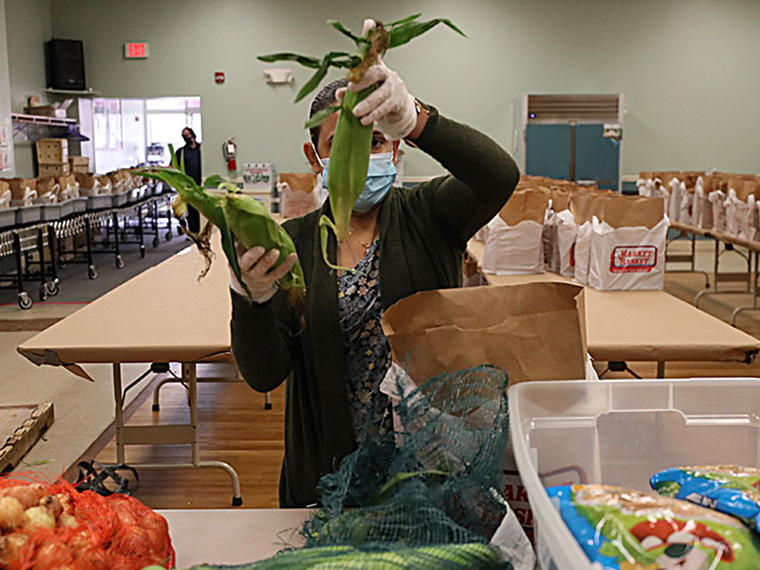Technology and mobile finance needed as nanostores’ compete against online behemoths
“Nanostores” — sometimes no more than a wooden stand or a window in the owner’s home — play an outsized role in the world economy. They give employment to millions and are a vital supplier of food items and consumer products for poor households at the base of the economic pyramid.
With more than 50 million outlets, nanostores also represent one of the world’s largest retail channels. They’re responsible for much of the growth in the consumer-products industry over the last several decades, claiming more than 85% of the market for consumer-packaged goods in South Asia and sub-Saharan Africa.
But in a connected world, nanostores are increasingly at risk. Online retailers and multinational convenience store chains such as Japan-based FamilyMart and Dallas-based 7-Eleven are encroaching on their markets. Already, stores in China have lost market share to this new competition.
Opt In to the Review Monthly Email Update.
One problem is that most simply aren’t set up to compete with the hyperefficient supply chains of modern retailers. Getting goods into the stores is often difficult and expensive; their cash-based operations leave little financial cushion for growth, and those in rural areas often lack electricity and refrigeration.
A paper in Production and Operations Management by Tilburg University’s Rafael Escamilla and Jan C. Fransoo and UCLA Anderson’s Christopher Tang surveys some of the ways nanostores and their suppliers are using new technologies and innovative business models to meet the increased competition.
With smartphones and mobile payments, the study finds, nanostores can reduce their dependence on cash, gain access to financial services and provide suppliers with more detailed information about sales. With cheap solar panels, off-the-grid stores can add refrigeration and become a power hub for neighbors. New business models can ease distribution bottlenecks in rural areas and provide added revenues in cities.
The survival of these stores can be critical for the communities they serve, Tang says in an email. Nanostores provide jobs for their owners and tiny staffs, who often lack education and have limited resources. They also have deep ties with their neighborhoods.
“Because big stores are efficient, they will kill local jobs and the communities could be destroyed,” Tang says.
Previous research has emphasized that top-performing supply chains possess “the three A’s” — they’re agile and adaptable and they align the interests of all parts of the chain. For nanostores in rural areas, the authors add two more important A’s for success: the increased accessibility and affordability of important technologies.
Access to low-cost solar panels is a good example. India has more than 12 million nanostores, called “kirana,” the largest concentration in the world. Many operate in remote rural areas that lack roads, electricity or phone service. Without electricity, shops close at sunset, and they can’t sell products like bottled drinks that need to stay cold.
To help stores adapt (and to boost sales), Coca-Cola India developed the eKOcool solar-powered cooler (which looks like the old chest coolers once common in filling stations and corner stores in the U.S.). The equipment not only keeps beverages cold, it can also be used to charge lanterns (so the store can operate after dark) and customers’ mobile phones — an added source of traffic.
When it comes to stocking nanostores, rural areas and cities present daunting, if different, challenges for suppliers. In many cases, individual suppliers use their own drivers to make deliveries, a large-scale, expensive business. In Mexico, Coca-Cola delivers directly to 1.3 million nanostores.
Stores typically place less-than-case sized orders, and armies of drivers visit tens of thousands stores in a week. Many use route-planning software — which determines the optimal delivery schedule and enables planners to track their performance — but congestion, convoluted traffic patterns and a lack of parking for unloading can throw a wrench into the most sophisticated planner.
Using smartphones and data analytics, software from Atlanta-based Delivery Dynamics Inc., continuously updates delivery routes based on real-world conditions, whether unexpected detours or the lack of nearby parking. The software doesn’t simply try to find the most efficient travel route. It also takes into account the time spent inside stores or looking for parking and looks for ways to make the entire delivery process more efficient.
Congestion is less of an issue in rural areas, but the lack of formal distribution channels is a bigger problem. Nanostore owners have to travel long distances to restock, and empty shelves mean lost sales for both the store and its suppliers.
Suppliers in several countries have adopted “hub-and-spoke” systems, where deliveries are made to local micro-distributors who supply more remote stores. In East Africa, for instance, Coca-Cola bottlers distribute cases to a hub in a larger village, and enterprising locals use push carts and bicycles to take small deliveries to remote areas. Coca-Cola bottlers in the region deliver drinks worth more $500 million to 1,800 hubs operated by 7,500 micro‐distributors.
Finance is one of the biggest obstacles to the survival and growth of nanostores. Most don’t have bank accounts or access to loans or trade credit, and all-cash operations mean drivers have to spend time counting out payment and face the constant risk of theft. That’s where mobile payment systems — and the data they collect — come in.
Tienda Pago, a Florida-based startup, uses a mobile app to provide shops with trade credit to buy inventory and for cashless payment to suppliers. Working with global beverage company AB InBev in Mexico and Peru, Tienda Pago finances a store’s purchases with a fixed-interest-rate loan. The loan enables the store to increase sales, AB InBev benefits from low-risk cashless transactions, and Tienda Pago gets access to transaction data it can use to determine the creditworthiness of different stores.
If more technology and new business models can help these stores survive, that’s a good thing, Tang says. “As I get older, I am beginning to miss the personal touch of small neighborhood stores,” he says. “Now, shopping becomes faceless and impersonal.”
Featured Faculty
-
Christopher Tang
UCLA Distinguished Professor; Edward W. Carter Chair in Business Administration; Senior Associate Dean, Global Initiatives; Faculty Director, Center for Global Management
About the Research
Escamilla, R., Fransoo, J., Tang, C. (2021). Improving Agility, Adaptability, Alignment, Accessibility, and Affordability in Nanostore Supply Chains. Production and Operations Management. https://doi.org/10.1111/poms.13309





